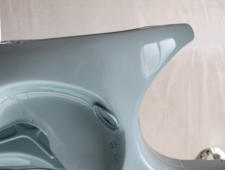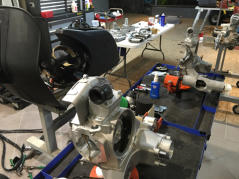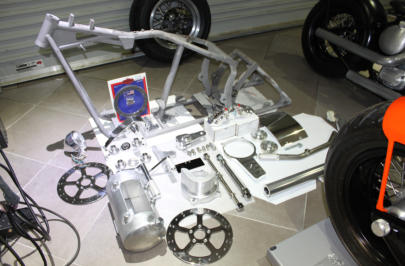


EST 1976













The best and largest range of Pinasco parts in Australia call us for the best deal.
We build complete engines from a standard 150 to a full race Pinasco 251cc.
We don’t care where your scooter is from, if your struggling with a problem give us a call we are here to help.
FOLLOW US:


 Now servicing all late model Vespa
Now servicing all late model Vespa


vespa
ONE REASON WHY WE DON”T CARE WHERE YOUR SCOOTER IS FROM India Piaggio first licensed the production of Vespa scooters in India to Bajaj Auto in the 1960s. In 1971, Piaggio's license was not renewed as a part of Indira Gandhi's privatization programs. After the collaboration ended, Bajaj continued to produce scooters based on the Vespa design, namely the Chetak. Another Vespa partner in India was that of LML Motors. Beginning as a joint-venture with Piaggio in 1983, LML, in addition to being a large parts supplier for Piaggio, produced the P-Series scooters for the Indian market. In 1999, after protracted dispute with Piaggio, LML bought back Piaggio's stake in the company and the partnership ceased. LML continues to produce (and also exports) the P- Series variant known as the Stella in the U.S. market and by other names in different markets. In the 2012 Auto Expo held in New Delhi, the iconic Vespa re-entered the Indian Market. Piaggio unveiled its range of scooters at the Expo. This became the first such venture of Piaggio in India without a local partner. Indonesia Danmotor Vespa Indonesia (DMVI) was a joint venture between Indonesian interests and the East Asiatic Company, which was based in Denmark. Between 1972 and 2001 it produced Vespas under licence for the Indonesian market. In 1976 approximately 40,000 units were produced giving DMVI the third biggest share of the Indonesian scooter market. Government tax incentives allowed these scooters to be exported to Thailand at less than the domestic market price, so that they would be economically competitive. DMVI only built 90 and 150cc models. From 1972 onwards the company was located at a purpose-built factory in Pulo Gadung. This was greatly expanded in 1977 to also manufacture sub-components, following a government decree that a higher domestically-built proportion of these should be used. Sub-components were also bought from other Indonesian manufacturers after their quality had been approved by Piaggio. Soviet Union Between 1956 and 1966 an unauthorised, reverse- engineered version of the Vespa was built and sold in the USSR by Vyatka. This was withdrawn after protests by Piaggio. Taiwan Vespa has had various partnerships and presence in Taiwan. In 1965 Taiwan Vespa Co. Ltd was licensed for Vespa scooter production. From 1972 to 1982 Vespa entered into a collaboration with manufacturer PGO. In 1978 Vespa entered into a collaboration with TGB, which to some extent, continues to this day (namely with CVT transmission production). United Kingdom In 1951 the financially troubled motorcycle manufacturer Douglas started production of Piaggio licensed Vespa scooters in Bristol, with a market to include some Commonwealth countries as well as the UK. Westinghouse took over Douglas in 1955, and while motorcycle production was stopped in 1957, Vespa production continued until 1965. Douglas was more than a simple assembly plant for parts imported from Piaggio; many of the models made by Douglas had a high percentage of content manufactured by Douglas (eg cylinder heads, gear clusters, brake drums and other mechanical parts) or by UK supply companies (eg seats, carburetors, tyres, and some electrical components were made in the UK). Models made by Douglas were primarily the Vespa 125 and 150 (VBB). Douglas produced Vespers were often outdated compared to current Italian models. Douglas failed to meet the production numbers hoped for by Piaggio, though after production ceased in 1965 Douglas remained the UK importer for Vespa scooters until its demise in 1982.
EST 1976


Pinasco 251 engines in stock
177cc, 190cc, 215cc, 225cc, 236cc






With our history, we would be the last people to ask in regards to restoring a scooter.
Back in the UK between myself, Bobbie Kent, John Brown and Dave Watkins, we would
cut, chop and metal flake anything we could get our hands on.
As far as we were concerned making it fast was the only thing to do, making it original
was what you made it.
People asked when I was younger, are you a Mod Dave or a Rocker, I replied I’m a
MOCKER….simply because all we wanted to do was ride anything and make it fast.
Times have changed and in our eye it’s sad that so many enthusiasts put so much
time into making scooters a nuts and bolts original.
I have nothing but respect for the people that can do this, I spent most of my painting
years restoring Jags, MG’s and Stags but, rather than killing the cult, restoring Morris
Minors would be a better past time for these kind of people.
There is nothing original about painfully making a Vespa or Lambretta original as it left
the factory, the Mods and Rocker scene was nothing to do with that at all.
Let’s face it the Italians may have invented the things but the British were the ones
that set the trend, made the music, made the clothes and chose to ride scooters …
that’s a MOD.
Make it your own and enjoy the ride, because it’s over before you know it.








177cc, 190cc, 215cc, 225cc,236cc







CALL FOR THE BEST PRICE
We have been dealing with Pinasco for years and will soon
have the full range online at great prices, no need to order
overseas we have it all here and will do our best to beat or
match prices where ever we can.
We have done some great deals with a number of suppliers
and will have everything you need to rebuild your Vespa
online.
If you want Exile Cycles call us just pure Exile.

Carbon Fiber Fan Covers
$195.00



Key cutting and key programing any model










